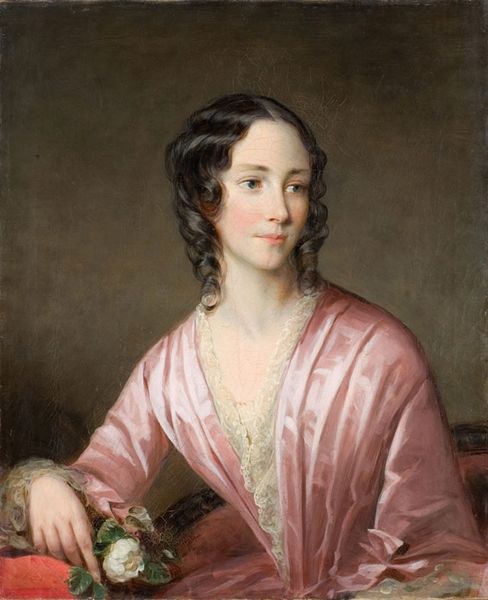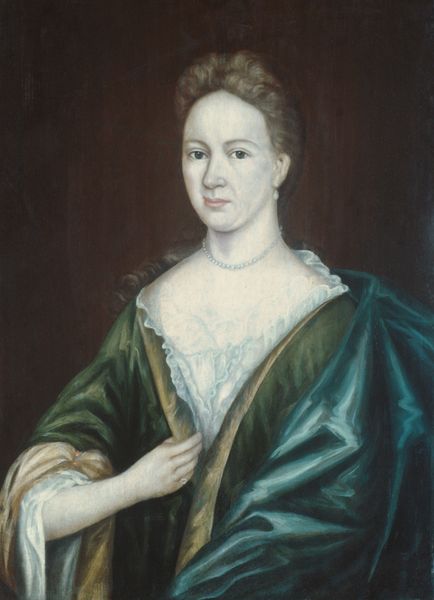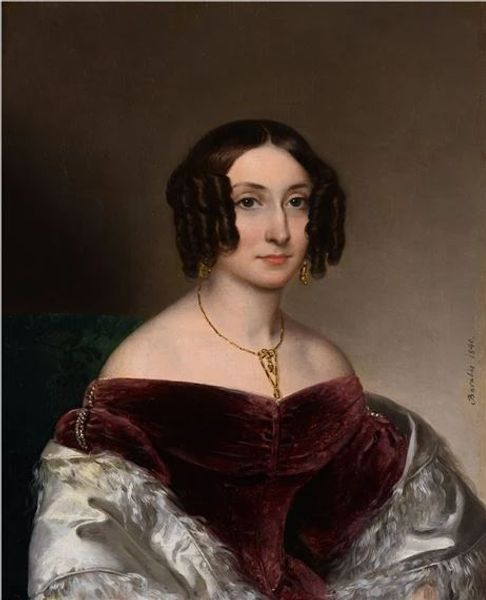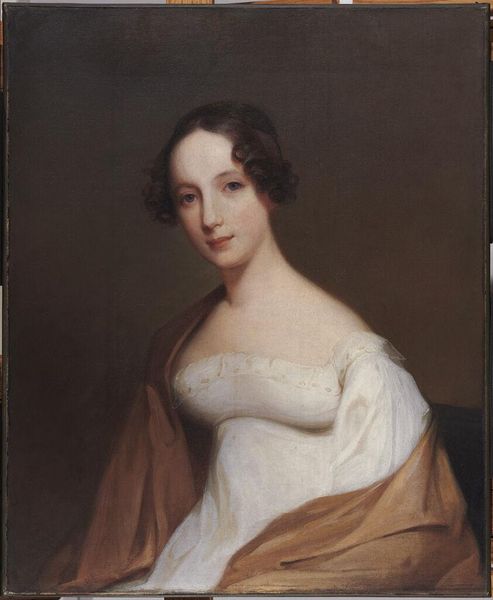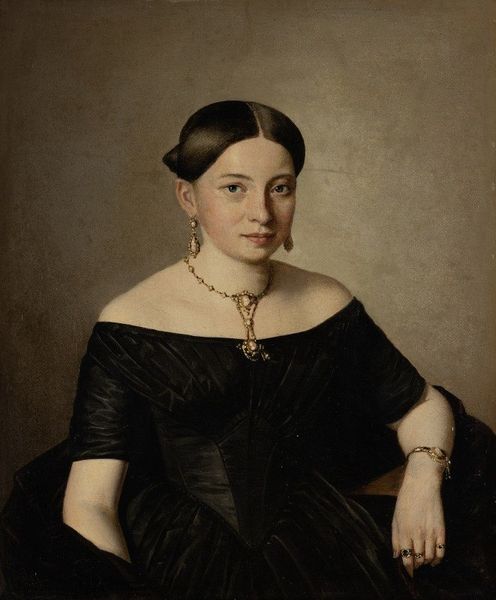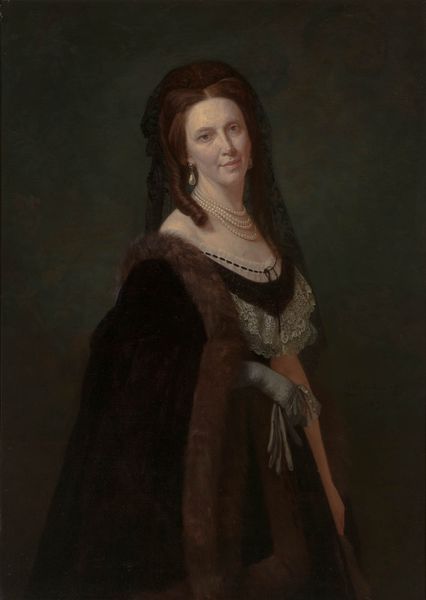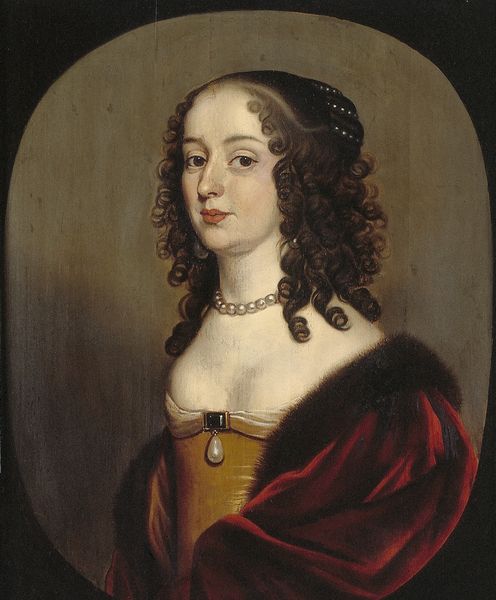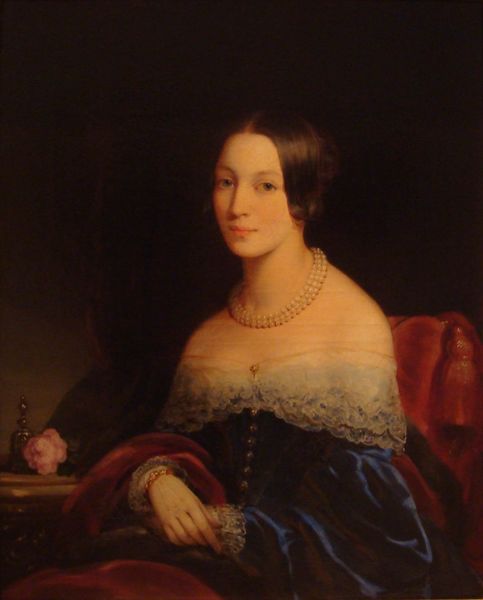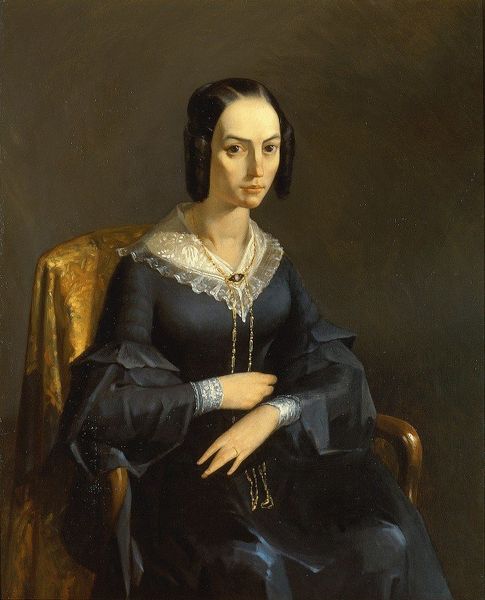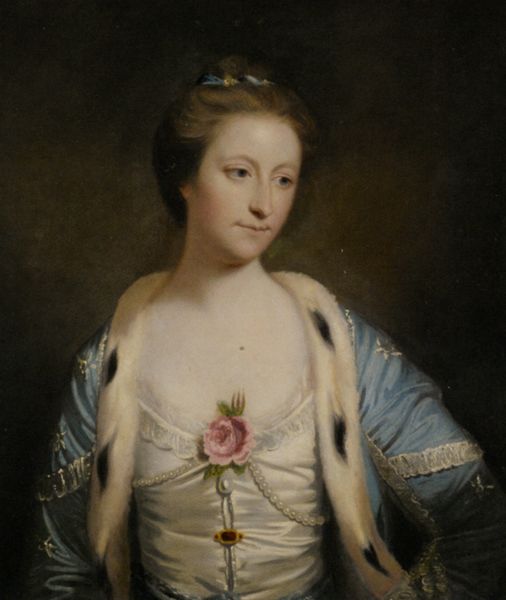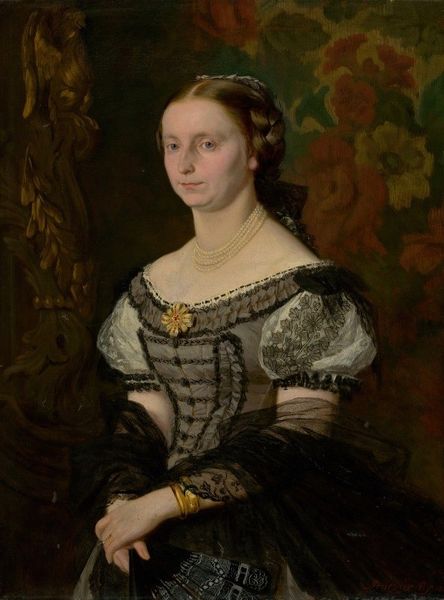
painting
#
portrait
#
character portrait
#
painting
#
portrait reference
#
portrait head and shoulder
#
romanticism
#
united-states
#
animal drawing portrait
#
portrait drawing
#
genre-painting
#
facial portrait
#
academic-art
#
portrait art
#
fine art portrait
#
realism
#
celebrity portrait
#
digital portrait
Dimensions: 27.6 × 22.5 cm (10 15/16 × 8 15/16 in.)
Copyright: Public Domain
Curator: The artwork we're observing is titled "Mrs. Daniel Embury (Emma Catherine Manley)." It’s an oil on canvas piece, and while the exact artist is debated, it dates somewhere between 1837 and 1863. Editor: My first thought is the contrast between her somewhat severe expression and that vibrant blue dress. It feels very controlled, yet hopeful somehow. Curator: The dress, I think, plays into notions of 19th-century American domesticity. Notice the restraint in color. It's bright but not showy, speaking to a specific kind of middle-class aspiration and a coded language around acceptable feminity of that era. Editor: Precisely! And the jewelry; it’s more than ornamentation. Necklaces in portraits often symbolized status, yes, but could also act as amulets— subtle defenses against the ‘evil eye’ or ill fortune, reflecting a hidden vulnerability. The shape suggests a protective symbolism that runs deeper than mere adornment. Curator: You're tapping into something important about portraiture of this period, its function to project not only wealth, but also respectability. Consider the subtle cues of status. The precise, almost academic realism emphasizes the sitter's place within the social order. Editor: What intrigues me is how the curls framing her face contrast against that smoothness. The tightly controlled spirals seem to attempt framing an otherwise seemingly austere presence— suggesting she may embrace aspects of current style, while at the same time wanting to remain committed to some idea of traditional virtue. Curator: Absolutely, the clothing provides access to decoding some prevailing power dynamics of the time period and its specific ideas about women. We also can note what is NOT in the artwork, for instance she isn't actively engaged in a social act within the portrait like holding a book or receiving flowers from another figure. Editor: Her steady, fixed gaze evokes ideas around personal narrative through symbology. We're perhaps supposed to imagine stories, inner thoughts just beyond the surface. Curator: Exactly. Placing works such as this within contemporary dialogue encourages new reflections around agency, representation, and power, especially how race, gender, and identity can affect access. Editor: Indeed. Visual components in works of art create echoes across generations, reminding us that meaning is never static. It can often be found in layers within images that are more complex than one realizes.
Comments
No comments
Be the first to comment and join the conversation on the ultimate creative platform.
